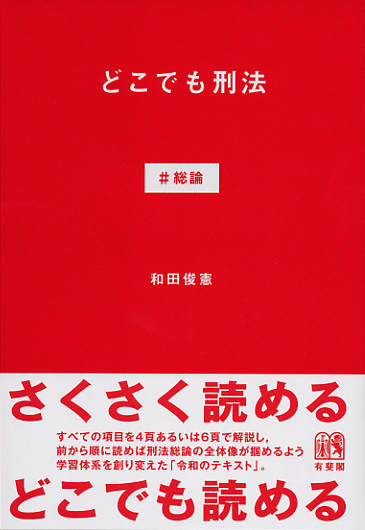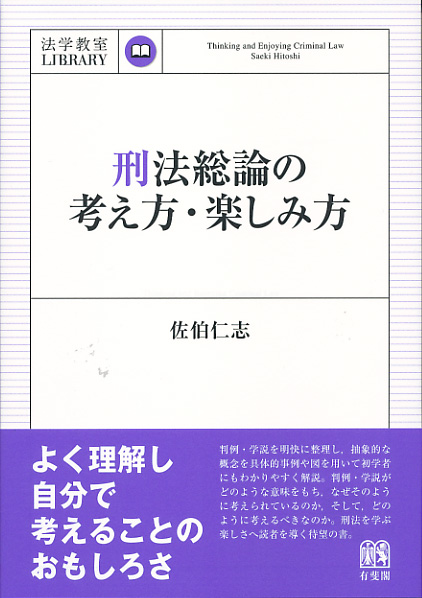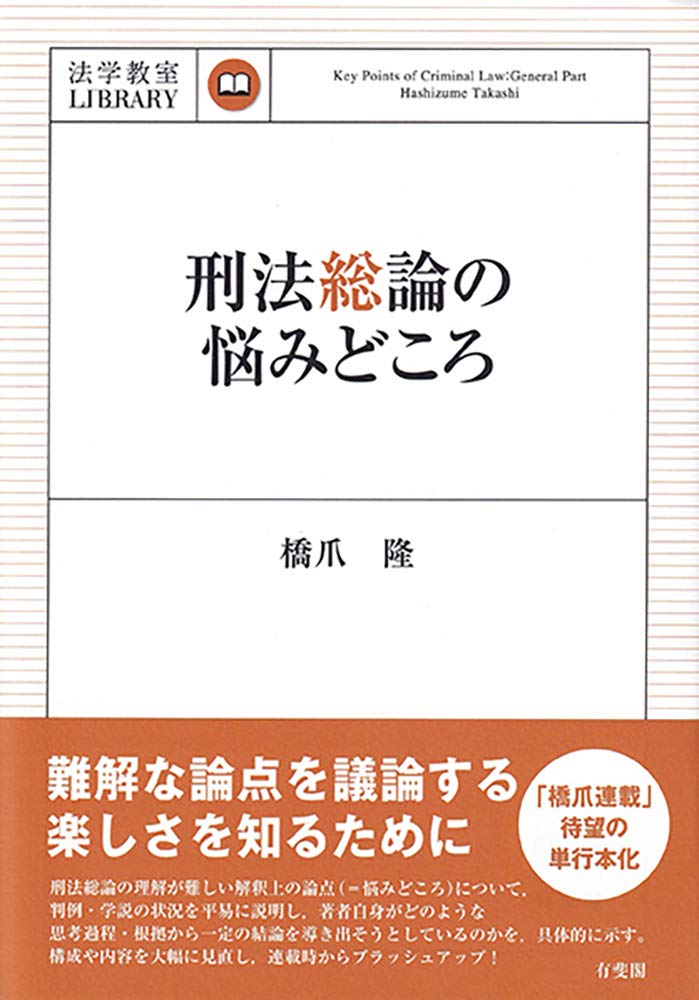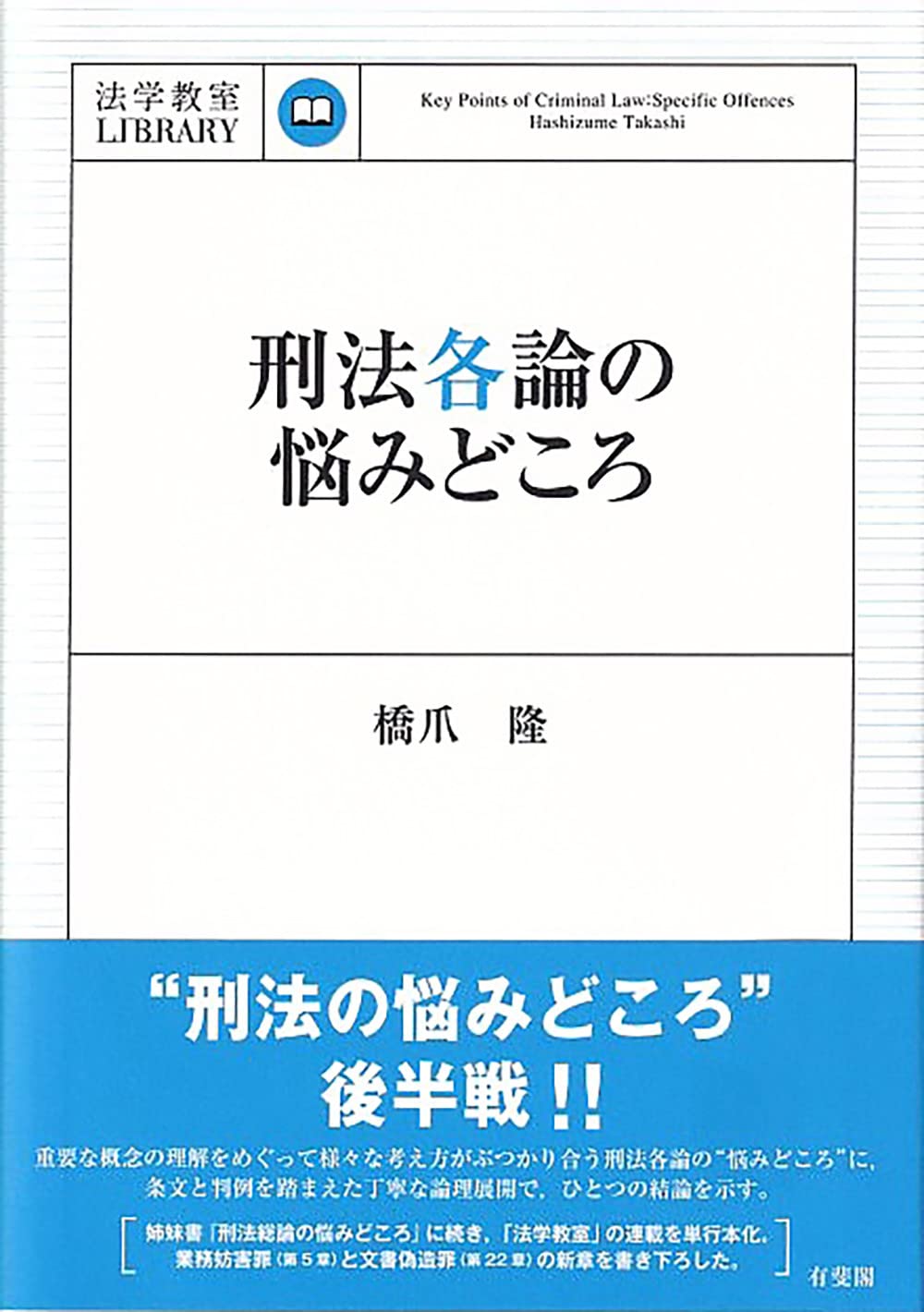
Title
Dokodemo Keihō #Sōron (Let’s Study Criminal Law Everywhere #GeneralPart)
Size
208 pages, 127x188mm, softcover
Language
Japanese
Released
October, 2019
ISBN
978-4-641-13939-8
Published by
Yuhikaku Publishing
Book Info
See Book Availability at Library
Japanese Page
This book is an introductory text on a general theory of the criminal law. It is duodecimo in size and the body text is about 180 pages. Excluding columns, the textbook is in effect 160 pages long. The book is divided into two parts, the first part consisting of fifteen chapters and the second part consisting of nineteen chapters. Therefore, the number of pages allocated to each chapter is small and limited to four or six pages. One of the features of this book is that it has a structure in which a large number of blocks of such an easy-to-grasp quantity are piled up.
The order of each block is also characteristic. Textbooks on the criminal law are generally written in accordance with the academic system. However, it was systematized in pursuit of academic rationality for those who once understood it. On the other hand, a primer on the criminal law is for those who study it for the first time. From this point of view, this book is designed not to be bound by the system of criminal law, but to pursue the sequence from the more fundamental to the exceptional, from the simpler to the more complex, and to proceed without presupposing the content written later than the page you are reading, that is, not to go back and forth.
As a result, the first half of this book goes through the most basics of a general theory of the criminal law, and the second half goes through a little deeper learning. The most important feature of this book is that it has two rounds of a general theory of the criminal law in one book. To put it in a slightly exaggerated way, it proposes a new learning system for a general theory of the criminal law, including the order of the above-mentioned blocks, and I am proud of it as a breakthrough.
Another feature of this book is that it provides explanations while frequently showing specific examples. From one-to-two lines to over twenty lines, there are over 160 cases in total. In law textbooks where descriptions are essentially abstract, one useful way is to use concrete examples to aid understanding. However, there has been no textbook for the criminal law that accumulates cases and their explanations in details. The cases were limited to those at issue in court cases. In this book, regardless of the existence of judicial precedents, I try to explain all the items and issues based on specific examples as much as possible, which should lead to easier understanding.
I think this book boasts the understandability that is rarely seen as a textbook of general theory of the criminal law. However, easy-to-understand textbooks are not always good. This is because "easy-to-understand" may include "feel as if you understood everything". If it’s too hard to understand, you won't be able to move on, so there may be some meaning to just being able to feel as if you understood it. But when you read this book and feel that you have understood the basics of a general theory of the criminal law, you should reach out to other textbooks and look for suspicious parts of this book as an introductory book that are falsified and hidden. Only when you have a question and solve it, your understanding will deepen. This book may be a good place to start with two rounds of learning of a general theory of the criminal law, but it may be a very bad book in a sense that it does not raise too many questions.
(Written by WADA Toshinori, Professor, Graduate Schools for Law and Politics / 2021)



 Find a book
Find a book


 eBook
eBook


